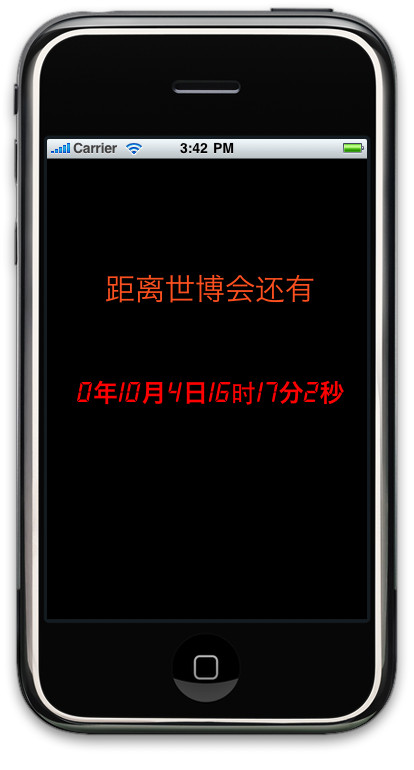-(void)awakeFromNib
{
// Create the rendering loop timer
renderTimer = [[NSTimer scheduledTimerWithTimeInterval:
0.1 // a 100ms time interval
target:self // Target is this object
selector:@selector(timerFired:) // What function are we calling
userInfo:nil repeats:YES] // No userinfo / repeat infinitely
retain]; // No autorelease
}
// Timer callback method
- (void)timerFired:(id)sender
{
// All we do here is tell the display it needs a refresh
[self setNeedsDisplay:YES];
}
//
Tuesday, May 12, 2009 
- (void)tableView:(UITableView *)tableView didSelectRowAtIndexPath:(NSIndexPath *)indexPath {
UITableViewCell *newCell = [tableView cellForRowAtIndexPath:indexPath];
UILabel *cellLabel = (UILabel *)[newCell.contentView viewWithTag:1];
[newCell setSelected:YES animated:YES];
NSMutableDictionary *myDictionary = [[NSMutableDictionary alloc] init];
[myDictionary setObject:tableView forKey:@"table"];
[myDictionary setObject:indexPath forKey:@"indexPath"];
// The colon after the onTimer allows for the argument
[NSTimer scheduledTimerWithTimeInterval:0.5 target:self selector:@selector(onTimer:) userInfo:myDictionary repeats:NO];
[myDictionary release];
} So the onTimer method will get called after .5 seconds and it's being sent the userInfo object containing that NSMutableDictionary. Now to use that...
- (void)onTimer:(NSTimer *)timer {
NSLog(@"--- %@", [timer userInfo] );
[[[timer userInfo] objectForKey:@"table"] deselectRowAtIndexPath:[[timer userInfo] objectForKey:@"indexPath"] animated:YES];
// I have a reference to the tableView so I can do this below
// but to show how the keys work, the call above these works
//[table deselectRowAtIndexPath:[[timer userInfo] objectForKey:@"indexPath"] animated:YES];
} Ta da. Now I see how this works, and userInfo has a type of (id) meaning it can be anything.
代码也比较简单,开始运行viewDidLoad的时候加载 [NSTimer scheduledTimerWithTimeInterval:1.0 target:self selector:@selector(timerFireMethod:) userInfo:nil repeats:YES];//使用timer定时,每秒触发一次
,然后就是写selector了。
{
//NSDateFormatter *dateformatter = [[[NSDateFormatter alloc]init] autorelease];//定义NSDateFormatter用来显示格式
//[dateformatter setDateFormat:@"yyyy MM dd hh mm ss"];//设定格式
NSCalendar *cal = [NSCalendar currentCalendar];//定义一个NSCalendar对象
NSDateComponents *shibo = [[NSDateComponents alloc] init];//初始化目标时间(好像是世博会的日期)
[shibo setYear:2010];
[shibo setMonth:5];
[shibo setDay:1];

[shibo setHour:8];
[shibo setMinute:0];
[shibo setSecond:0];
NSDate *todate = [cal dateFromComponents:shibo];//把目标时间装载入date
[shibo release];
// NSString *ssss = [dateformatter stringFromDate:dd];
// NSLog([NSString stringWithFormat:@"shibo shi:%@",ssss]);
NSDate *today = [NSDate date];//得到当前时间
// NSString *sss = [dateformatter stringFromDate:today];
// NSLog([NSString stringWithFormat:@"xianzai shi:%@",sss]);
//用来得到具体的时差
unsigned int unitFlags = NSYearCalendarUnit | NSMonthCalendarUnit | NSDayCalendarUnit | NSHourCalendarUnit | NSMinuteCalendarUnit | NSSecondCalendarUnit;
NSDateComponents *d = [cal components:unitFlags fromDate:today toDate:todate options:0];
lab.text = [NSString stringWithFormat:@"%d年%d月%d日%d时%d分%d秒",[d year],[d month], [d day], [d hour], [d minute], [d second]];
}






















 95
95

 被折叠的 条评论
为什么被折叠?
被折叠的 条评论
为什么被折叠?








